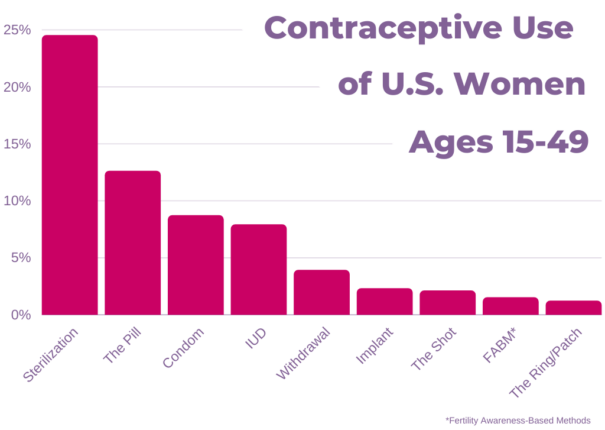Identifying Emerging Business Opportunities: A Map Of Promising Locations

Table of Contents
Analyzing Macroeconomic Indicators for Promising Locations
Before diving into specific markets, understanding the broader economic climate is crucial. Analyzing macroeconomic indicators helps identify regions poised for growth and minimizes investment risk. Key indicators to scrutinize include:
-
Research GDP growth rates and projections for different regions: A consistently rising GDP suggests a healthy economy, creating a favorable environment for business expansion. Look for regions with projected GDP growth exceeding national averages. Tools like the World Bank's data platform and national statistical agencies can provide valuable insights into GDP growth trends.
-
Analyze unemployment rates to understand the availability of a skilled workforce: Low unemployment rates often indicate a strong economy but can also signal a competitive labor market. Analyze the unemployment rate in conjunction with the availability of skilled workers relevant to your industry. Consider regions with robust vocational training programs or universities specializing in relevant fields.
-
Consider inflation rates and their impact on operating costs and consumer spending: High inflation can erode profit margins and reduce consumer spending. A stable inflation rate provides predictability and minimizes economic uncertainty. Compare inflation rates across different regions to gauge their impact on your business.
-
Investigate consumer spending patterns and disposable income levels within potential locations: High disposable income and robust consumer spending indicate a strong market for many businesses. Analyzing consumer spending data can highlight specific sectors with the greatest potential for growth. Government statistics and market research reports often contain this information.
-
Look for regions with government incentives supporting business development: Many governments offer tax breaks, grants, and other incentives to attract businesses. Research local and regional government programs to identify potential financial benefits for your business.
Identifying Untapped Markets and Emerging Industries
Once you have a broad understanding of macroeconomic conditions, delve into specific market opportunities. Identifying untapped markets and emerging industries is crucial for maximizing your chances of success.
-
Conduct thorough market research to identify underserved populations and unmet needs: Market research unveils opportunities for innovative products and services. Focus on identifying gaps in the market where existing businesses haven't fully addressed consumer needs. This may involve surveying potential customers, analyzing competitor strategies, and studying market trends.
-
Analyze emerging industry trends and identify sectors with high growth potential: Stay abreast of the latest technological advancements and societal shifts. Industries experiencing rapid growth offer exciting investment opportunities but also increased competition.
-
Look for niche markets with less competition and a strong potential for differentiation: Focusing on niche markets allows you to target specific customer segments with specialized products or services, minimizing direct competition.
-
Analyze the competitive landscape to understand the strengths and weaknesses of existing businesses: A competitive analysis reveals opportunities to differentiate your business and gain a competitive edge. Identify market gaps and areas where you can offer superior products, services, or customer experiences.
-
Identify locations where demographic trends align with your target customer profile: Ensure your chosen location has a sufficient population of your ideal customer base. Understanding demographic trends allows you to tailor your marketing efforts and maximize your reach.
Assessing Infrastructure and Logistics in Potential Locations
The quality of infrastructure significantly influences business operations and costs. Thorough assessment is essential:
-
Evaluate the quality of transportation infrastructure (roads, railways, airports): Efficient transportation networks are vital for logistics, supply chain management, and customer accessibility.
-
Assess the reliability and cost of utilities (electricity, water, internet): Reliable and affordable utilities are crucial for maintaining business operations. Consider the potential costs associated with interruptions or inadequate infrastructure.
-
Consider the ease of accessing suppliers and distributors (supply chain efficiency): Efficient supply chains minimize costs and delays, improving overall business efficiency.
-
Analyze communication infrastructure and its impact on business operations: Modern communication networks are crucial for effective operations, customer service, and marketing efforts.
-
Evaluate the accessibility of the location for both employees and customers: A well-located business is easily accessible to employees, customers, and suppliers, improving efficiency and customer satisfaction.
Evaluating the Regulatory and Legal Environment
Understanding the regulatory and legal environment is critical for minimizing risks and ensuring compliance.
-
Research the local regulatory environment and understand any specific industry regulations: Each industry has specific rules and regulations that vary by location.
-
Determine the ease of obtaining necessary business licenses and permits: The bureaucratic processes for securing licenses and permits can differ significantly across regions.
-
Investigate available tax incentives and government support programs for businesses: Tax breaks and government grants can significantly reduce business expenses and improve profitability.
-
Assess the overall stability and predictability of the legal and political environment: Political and legal instability can create uncertainty and risk for businesses.
-
Conduct a risk assessment to identify potential legal and regulatory challenges: Proactive risk assessment helps you prepare for and mitigate potential legal and regulatory problems.
Considering the Social and Cultural Landscape
The social and cultural landscape impacts consumer behavior and business practices.
-
Understand the local culture and its impact on business practices and consumer behavior: Cultural nuances influence marketing strategies, customer service, and business etiquette.
-
Analyze the demographic makeup of the population and its alignment with your target market: Ensure the location’s demographics align with your target customer profile.
-
Consider the lifestyle preferences of the community and their influence on business success: Local lifestyle preferences can influence consumer demand and preferences.
-
Evaluate the availability and skills of the local workforce: Access to a skilled workforce is essential for efficient operations.
-
Assess the overall community support for new businesses: Positive community support can enhance business growth and success.
Conclusion
Successfully identifying emerging business opportunities and promising locations requires a holistic approach. By carefully analyzing macroeconomic indicators, untapped markets, infrastructure, regulations, and the socio-cultural landscape, you can significantly improve your chances of success in finding promising locations for business expansion. Remember, thorough research and a strategic approach are crucial for maximizing your return on investment. Start mapping your path to success today by utilizing this framework to identify your own emerging business opportunities and promising locations. Don't delay, begin your location analysis now and unlock the potential for unprecedented growth!

Featured Posts
-
 Britannian Kruununperimysjaerjestys Paeivitetty Lista Ja Selitys
May 10, 2025
Britannian Kruununperimysjaerjestys Paeivitetty Lista Ja Selitys
May 10, 2025 -
 Bondi Under Fire Senate Democrats Allege Suppression Of Epstein Documents
May 10, 2025
Bondi Under Fire Senate Democrats Allege Suppression Of Epstein Documents
May 10, 2025 -
 Access To Birth Control Examining The Impact Of Over The Counter Options Post Roe
May 10, 2025
Access To Birth Control Examining The Impact Of Over The Counter Options Post Roe
May 10, 2025 -
 The Crucial Role Of Middle Managers In Boosting Employee Engagement And Organizational Performance
May 10, 2025
The Crucial Role Of Middle Managers In Boosting Employee Engagement And Organizational Performance
May 10, 2025 -
 Will Leon Draisaitl Be Ready For The Oilers Playoffs
May 10, 2025
Will Leon Draisaitl Be Ready For The Oilers Playoffs
May 10, 2025
